#norwegian culture
Text

Young Norwegians, 1884
(Two women in bunads from Flesberg in Numedal)
By Jahn Ekenæs
#art#painting#fine art#classical art#norwegian art#norwegian artist#norwegian painter#oil painting#19th century#19th century art#genre painting#culture#norwegian culture#nature#late 1800s#1800s#european culture#northern europe#european art#europe#norway
262 notes
·
View notes
Note
Why are people in Norway more scared of vampires than Americans???
(Anon is referring to this post.) TLDR: Edward would be convinced Norwegians can all tell he's not human because they avoid talking to him and refuse to sit near on the tram.
The joke is that we have no idea he's a vampire, it's just a cultural thing: you do not, ever, bother strangers because it would be rude to do so. Sitting next to someone on the tram is presumptious, randomly striking up conversation with a stranger is alarming behavior, or, as was recently pointed out to me that I'd never thought about but is in my experience true of Southern Norway: in scenarios like if A and B are friends, B and C are friends, while A and C don't know each other, and A and B are hanging out with each other when C happens upon them, then B and C will talk while A remains silent unless introduced (which obviously happens if the conversation goes on, but if it's a quick encounter there's no need for A's involvement. Or, A is introduced, C and A say hello then C and B continue talking). This is considered polite for all parties involved, as C wouldn't want to bother A and A wouldn't want to impose upon B and C.
(Vetted this with a friend to be sure it's not just me, she hates being the A in this scenario. I hate being B, because I'm stressed on behalf of both A and C. Being A does genuinely suck though, you just have to hope B and C wrap it up quickly.)
Point being, Scandinavians are known to come off as cold to foreigners, even though we're just trying to be polite and not impose on people, and Edward would definitely take it the wrong way.
As many have before him.
53 notes
·
View notes
Text


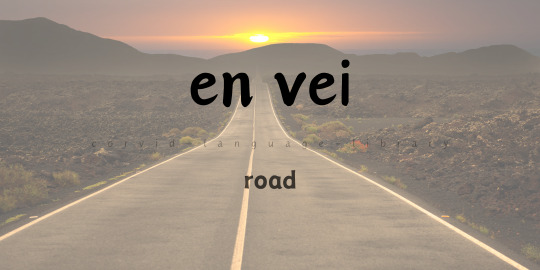




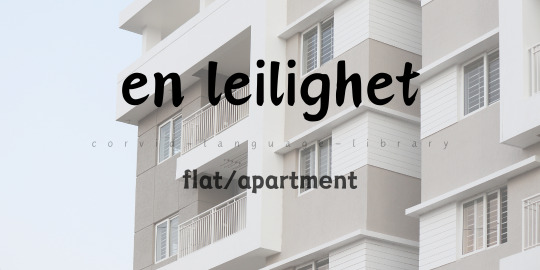
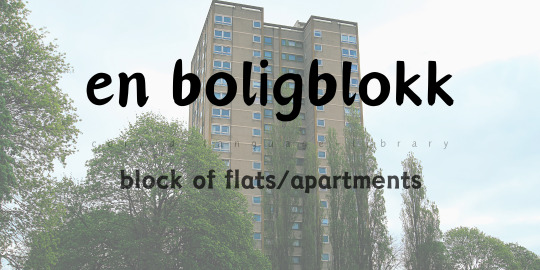

Norwegian Bokmål for Total Beginners (January 2024 Crash Course)
22. Hvor bor du? (Where do you live?)
Good morning/afternoon/evening to you! Today's post is a long one because we have some cultural insights at the end if you're interested. But if you're just here for the vocabulary, that's fine too.
by (m) - town, city
bygd (m/f) - village
vei (m) - road
gate (m/f) - street
bolig (m) - residence, housing
hus (n) - house
leilighet (m) - apartment/flat
boligblokk (m) - block of flats/apartments
hytte (m/f) - cottage, cabin
Sample Sentences
Bor du i et hus eller en leilighet? (Do you live in a house or a flat?)
Susanna bor i tredje etasje (Susanna lives on the third floor)
Den boligblokken har åtte etasjer (That block of flats has eight floors)
Bolige i Oslo er dyre (Housing in Oslo is expensive)
Husene på denne veien er veldig fine (The houses on this road are very nice)
Karl Johans gate er en lang gate i Oslo (Karl Johans street is a long street in Oslo)
False Friends in Norwegian
Lots of vocabulary in Norwegian is similar to English vocabulary. But there are some words that look like an English word, but actually have a different meaning! Today we learned that ei gate is NOT a gate, but a street!
Here are a few mor beginner-level false friends to watch out for!
🇳🇴en dress = 🇬🇧a suit
🇬🇧a dress = 🇳🇴en kjole
🇳🇴bra = 🇬🇧good, well
🇬🇧a bra = 🇳🇴en BH (brystholder = breast holder)
🇳🇴ei mappe = 🇬🇧a folder
🇬🇧a map = 🇳🇴et kart
🇳🇴en sky = 🇬🇧a cloud
🇬🇧sky = 🇳🇴himmel
🇳🇴å telle = 🇬🇧to count
🇬🇧to tell = 🇳🇴å fortelle
🇳🇴en advokat = 🇬🇧a lawyer
🇬🇧an advocate = 🇳🇴en forkjemper
🇳🇴akkurat = 🇬🇧exactly
🇬🇧accurate = 🇳🇴nøyaktig
Cultural Insight: Hytter i Norge
In Norway, it's common for families to own a cottage out in the countryside. They tar hyttetur (go on a cottage-trip) during the holidays, typically at Easter and often during the summer too. Some cottages are modern with all the comforts of home (wifi, kitchen gadgets etc), while some families are adamant that the true hytte-experience means being cut off from all that. Some cottages don't even have an inside toilet, and you'll have to use the utedo (outdoor toilet) instead!
Owning a cottage has become more popular over time, and in recent years (especially since covid and working from home) the industry has boomed. This is creating a lot of controversy in Norway: building more cottages to supply the demand means clearing large swathes of forests and marshlands. Norwegians are quite protective about nature (or, at least, they claim to be) and many are unhappy with this development. It's also a problem for the locals who can't buy houses in their hometowns simply because all the houses are being bought up by city folk. Additionally, it means that for large portions of the year these places are ghost towns and businesses may struggle to make ends meet.
#nutrcracker norsk#norwegian langblr#beginner norwegian#jan '24 beginner norwegian crash course#learning norwegian#norwegian: a1#my oc: norwegian#norwegian#norsk#norwegian culture
12 notes
·
View notes
Note
If you haven't filled the survey completely yet, can you please send in [Phenomena by Ruben Eliassen] which Azur is from among the novels? The Norwegian publisher is treating it like crap these days and print fewer and fewer copies rather than celebrating its 22nd anniversary and being grateful for it being one of the first (and best) Norwegian fantasy book series. It was the one that made people start taking the genre seriously in Norway so it'll be depressing if it just disappears..!
Cool things for it's time and still is:
The hero has a love interest, the heroine doesn't, the author has later said that she's an aroace lesbian.
A 12-year old girl becomes friends with a guy in his 20s, they do not end up together and stay friends for the rest of the series.
The author manages show don't tell in a book, and discusses the weird misogyny that was around in the 2000s rather than acting like it never happened.
While there's unfortunately some implied r**e, are the ones doing it not glorified or end up with their victims. One of the victims is a man and treated as just as terrible as the other one and is never joked about.
One tribe that were used as slaves take the cousin tribe of the tribe that kept them as slaves as their slaves, this isn't treated as okay.
Adults aren't always right.
The protagonists both have ADHD but are presented as intelligent in their own ways despite being twins.
Is just very good.
Oh sure ! This seems really promising and rather woke for a 2000s book (some of you need serious updating and should come with special warnings but we love you 2000s series)
Here's the survey for those who'd like to help ! Reminder : we're talking about Phenomena by Ruben Eliassen (Norwegian book) and Ragnarok by Odin Helgheim (Norwegian comic). All hail Norway !

(Just a thought from someone whose country has a heavy colonial past : Not sure the "ex slaves turn easily into oppressors when given power" is actually a good take since I believe the "they'll do the same to us if given the occasion/as revenge on us" was the kind of saying used to oppose the end of slavery. It doesn't mean the book doesn't have great takes or that the author and readers are racist, just that it's possibly a poor/clumsy take)
You had me at twins with different personalities ! (I'm joking, I was into it when you said fantasy from Norway and I realized I didn't know what Northern fantasy looked like as a genre) If they translate it, I'll do my best to get my twin to read the copy I'll get
Funnily enough, my favorite kid/young teen series is a French series who never had been translated which title is Phaenomen (from the Latin noun, all the chapters have a Latin title). It's about kids with different kinds of disabilities (unnamed but quite reminescent of autism and other mental or physical disorders -with a supplementary 'magical/sciency' touch but I promise no magical superhealing stuff- : dyspraxia, hypermnesia, migraines, hyperfixations, hypersensitivity to light, difficulties to communicate, anger management issues etc.) who flee the special needs type of clinic they're in and find themselves in quite a lot of trouble as they try to survive together as a makeshift family and run from some powerful Templar sect who's taken an interest in their uncommon abilities (special vision, superspeed, soul manipulation... all are the other sides of their disabilities)
It's been a while since I've last read it but I used to reread it several times a year. Some stuff in it might be problematic (ableism-wise) but I also have autistic friends who love the series too
If anyone else wants to mention childhood/teenagehood/pasthood reads not translated into English from their own countries, don't hesitate ! (Also works for movies, games and whatnot)
2 notes
·
View notes
Photo

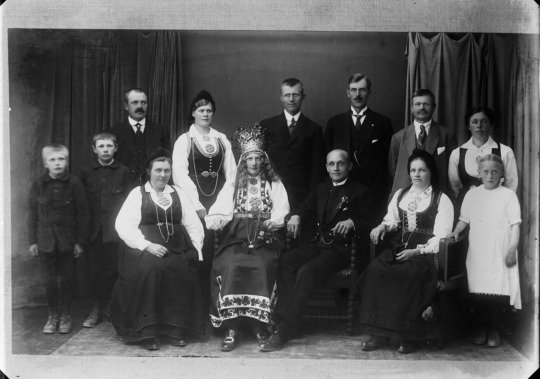
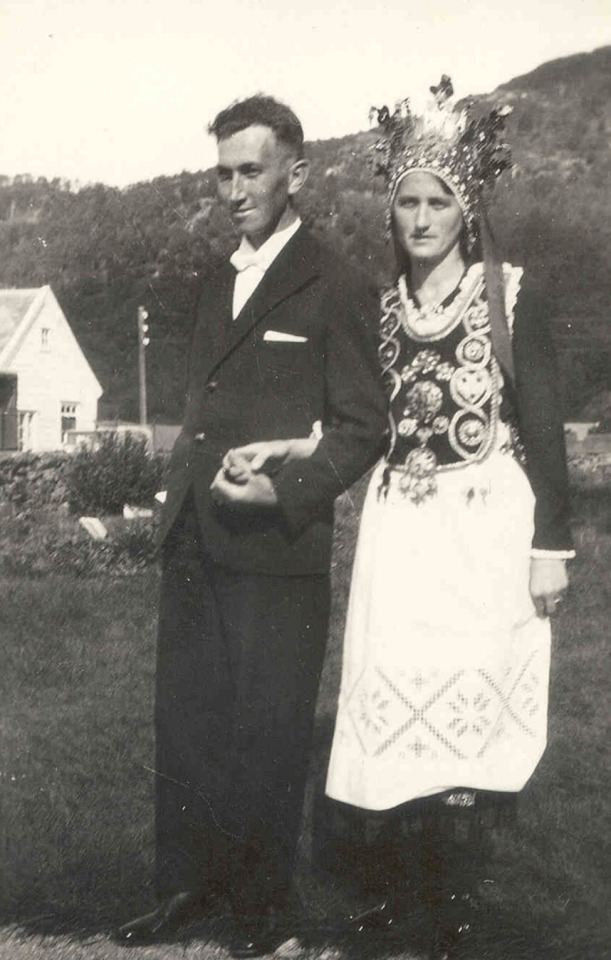

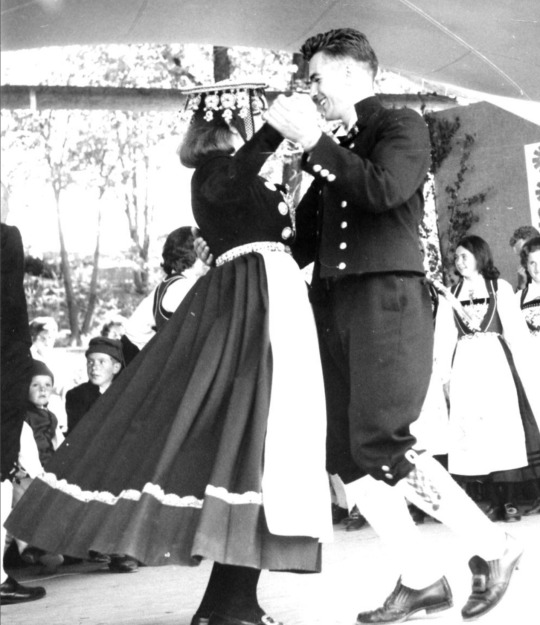




Vintage photos of Norwegian brides
Photo 1: Hardanger, Norway (Early 1900s)
Photo 2: Unknown location but taken somewhere between 1915-20
Photographed by Hans Johnsrud
Photo 3: Newly weds Sigfrid og Anders Hauge, Hordaland, Osterøy 1933
Photo 4: Hol, Buskerud ca.1920-1922
Photo 5: Voss, Norway 1965
Photo 6: Liabygda, Sykkylven, Møre og Romsdal
Photo 7: Newly weds Torstein og Kristine Narheim, Tyssedal, ca 1912
Photo 8: Tynset, Hedemark 1925 — 1930
Photo 9: Newly weds Oddmund og Ingeborg Tyssedalstveit, Odda, Hordaland 1916
#norwegian#norway#Norge#culturenorway#vintagenorway#vintage#norwegian history#norwegian culture#culture#cultural#cultures#cultural clothing#bunad#Bunadstakk#telemarksbunad#headdress#traditionalheadwear#bride#brides#traditional bride#traditional brides#Wedding#norwegianwedding#wedding crown#Norwegian crown#wedding wear#Old#old phography#old photo#1900s
23 notes
·
View notes
Text
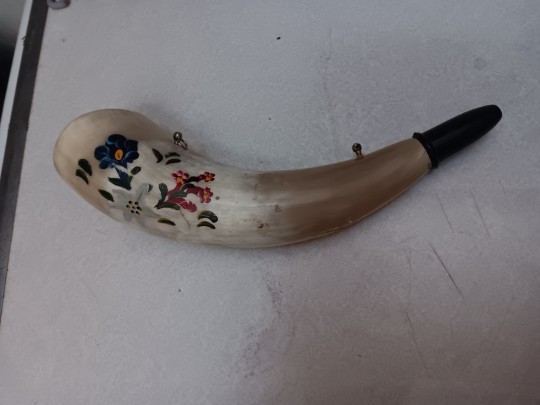
So maybe a year ish ago I found this horn at a thrift shop.
This past weekend I got the opportunity to go to paganicon for the first time. One of the main programs there was the sounds of the Iron age. This amazing person had instruments that were historically made to be similar to norwiegen and norse/Scandinavian of those times. She played them, sang songs, and told stories. Even sang a song of the sagas.
Some of those instruments were made from different goat horns and other animals. Now I believe this is a real horn except for the mouth piece. It is plastic and was made to fit on the end of the horn.
Anywho because of the event I had learned something new about my norwiegen heritage. I honestly don't know much about the different things of my heritages because I have many blood lines and there has been alot of disconnect in culture and community due to generational trauma.
However this weekend I had learned what this horn was and how it's used. It actually has many uses. A horn was sounded to give thanks to hosts of parties or events. A horn was sounded to give thanks to the guests of events. A horn was sounded to honor ancestors and spirits of the lands. A horn was a musical instrument that provided music at parties. It sometimes made the people dance! A horn was sounded to communicat the arrivals of guests. A horn was used to send prayers to the gods. A horn was sounded to call childeren back to the house.
Horns were used for so many things and it sounded like almost every villager had one for the uses they needed it for.
I am proud that I found this gem thrifting. I am so glad that I bought this now after learning about it. I now know how I can use it in my practices and connect with the gods and ancestors with it. It is a beautiful horn.
I was thinking of cleansing it, blessing it, repainting the flowers on it, and putting some runes on it to make it my own.
#pagan#norse pagan#norse heathen#norse pagan witch#norse paganism#norwegian#norwegian culture#Ancestors#ancestor veneration#ancestors#ancestor altar#Ancestoral objects#ancestry#paganpride#paganism#information#thrifstorefinds#thrifting
3 notes
·
View notes
Note
Like this post if you're Norwegian.
.
#norwegian#norway#norwegian culture#norwegian cusine#norwegianblr#norwegian music#norwegian cinema#likes#askboxlikes
3 notes
·
View notes
Text
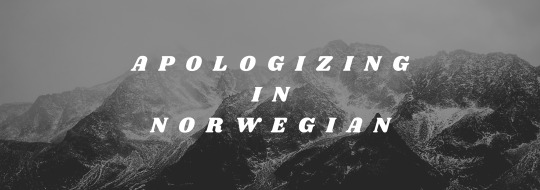
Unnskyld!
Unnskyld can be used in polite requests. It may also be used as an opening gambit when talking to someone. Essentially, you're apologising for inconveniencing someone, just as in the English excuse me:
Unnskyld, er det mulig å... Excuse me, is it possible to...
Unnskyld, kan du hjelpe meg med dette skjemaet? Excuse me, can you help me with this form?
This is also the common way of apologising or saying sorry, such as when you bump into someone or spill your coffee in someone's lap.
Occasionally, you may hear an excuse that sounds a lot like ''Omfladls!'' This is a somewhat truncated version of Om forlatelse! (I beg your pardon!) and while it used to be very common, it may now be about to become obsolete.
Beklager!
This can be used in the same wasy as Unnskyld!, and may be very slightly more formal. When you apologise for your actions or attitudes, Beklager is very common:
Beklager at jeg er sen! I'm sorry I'm late!
Beklager at jeg glemte å ringe deg. Sorry I forgot to call you.
When someone has accidentally nudged you or spilt coffee on you, the answers are the same, regardless of whether they say Unnskyld, Beklager, or Om forlatelse. Common responses are:
Det er i orden. That's all right.
Det er ok. That's ok.
Det går bra/fint. That's fine.
Source: Exploring Norwegian Grammar by Kirsti Mac Donald and Marianne MacDonald
52 notes
·
View notes
Text
No, Norwegians aren't rude
Original article by Sigrid Folkestad can be read here in Norwegian (bokmål).
Translation by revenseventyr.
Norwegians don't smile at people on the bus or ask strangers how they're doing. Some think that's impolite. "We leave people alone. This is Norwegian politeness," states NHH scientist Kristin Rygg.
A few years ago an opinion piece in the newspaper Bergens Tidende prompted strong interest from Kristin Rygg, linguist and Japan expert at NHH (Norwegian School of Economics). The author, a young American, described Norwegians as asocial and unfriendly. The post also struck a nerve with many readers. This might not be surprising, considering the following description:
"Am I going to become like most Norwegians? Unfriendly and rude? I really don't mean to put down Norwegians, and I don't think all Norwegians are unfriendly. As soon as I manage to get to know someone they are usually lovely! But what happened to ordinary politeness?"
Is there something wrong with us?
Kristin Rygg rejects these claims. She has written several scientific articles in the field of "politeness theory", which is its own discipline in linguistics.
The NHH scientist has found absolutely no universal standard for politeness in her studies. Soon tourists will flock to Bryggen in Bergen, and they won't meet "dismissive Norwegians" but instead people who have another form of politeness to, for example, Americans.
"So there's nothing wrong with the way we are, despite what many critics claim?"
"No, Norwegians are polite. We don't disturb others. We don't ask for help unless we really feel we need it. For us, that's polite," she says.
Norwegians are criticised for not greeting or making small talk with strangers, for not being personable and social and, of course, for the internationally known "Norwegian arm" where we reach past others at the table.
Empty words
"Some say that it's very rude not to say 'can you pass me the salt, please'. But that's not how we're brought up. With Norwegian politeness it's more important not to disturb people, and that also applies at the table. Chatting about nothing with people we don't know is absolutely a disturbance, so we do it as little as possible.
"There are also many in Norway who think that it's polite to leave people alone. It's more important than small talk and unnecessary comments and questions. We don't bother people more than is necessary.
"People from different cultures have very different perceptions of the concept of 'phatic communication', as linguists call it. Phatic communication is communication where the main goal is to strengthen social relations, not to exchange information," explains Rygg.
No universal standard
"To strengthen social relations with words is obviously good, but it's not the Norwegian tradition. In Norway it's more important not to bother people."
"Do you want to set aside the claim that Norwegians are rude?"
"Absolutely I do. I have read a lot of scientific literature on politeness, and no one has managed to find a universal form of it. The only thing we can say is that others are rude if they don't meet my subjective expectations for polite behaviour."
Visiting abroad
"But if we're in the USA maybe we have to respond a little more positively to what Americans intend to be 'warm' communication?"
"It's sensible when you're visiting another country to play around with forms of communication and not stubbornly expect that people will be the same as you," says the linguist.
There are nevertheless limits to how much we can change ourselves, she believes, because politeness is to do with our unconscious values.
"No one taught us the rules, so what happens when we meet people with other unwritten rules is that we react with feelings rather than logic."
Phrases in Japan
There are also very different types of politeness throughout the world. Many Japanese, for example, don't say exactly what they mean. They communicate meaning very indirectly and beat around the bush, says Rygg, who worked with the Japanese language and forms of communication both at Master's and PhD level.
"It is, so to speak, a part of the Japanese language. Sentences often have open endings or end with a question mark. If you ask me how many people live in Tokyo, I know the answer is 14 million, but instead I say '14 million live in Tokyo, but...?' because it won't sound too direct or oblique, and you might not agree with me."
Fully-formed people
The American way of being is, in general terms, concerned with using small talk to create warm relations, so it's completely fine to talk about personal things. In Japan they have many polite phrases they incorporate that aren't personal.
"Do you have any examples?"
"When you're visiting someone and you go into their house, you say 'I'm a bother'. They don't think any more of this expression than when we say 'you're welcome', it's something you shrug off. If you give a gift you say 'this is a boring thing, but here you go'. If you're served tea, you say 'thanks and sorry'. When you leave, you say 'I've been a bother'.
It's important to be able to use the phrases everyone is in agreement over, because then you're a fully-formed person. You don't need to get personal. If you're sitting on a long distance bus in the USA, on the other hand, it's completely OK to show pictures of your children and talk about personal things. Whatever creates warm relations is polite.
Distance politeness
"With distance politeness, which I think characterises Norwegians, it's not about creating the feeling of being best friends. We respect personal space and wait until you invite us in."
"Some also find small talk to be empty?"
"Yes, many think that. What's the point of saying the weather is good, when everyone can see the weather is good? think some. They're wasted words. When Norwegians are given personal details and invited to an American's home, some think they're on the way to becoming friends, but it is actually only an exchange of courtesies in the moment.
Consciously our way
'How are you' in English doesn't chime right here in Norway. If you say it to someone on the bus, you're hardly going to tell them about all the problems in your life.
"When Norwegians get irritated by Americans who say 'how are you', apparently without waiting for an answer, it's wise to remember that 'how are you' in American English doesn't mean 'tell me how it's going', but can rather be compared to the word 'hi'," explains Rygg.
"But would you ask someone you don't know about how it's going? I wouldn't. That said, the reactions of some permanent residents of Norway who grew up in other countries show that the Norwegian form of politeness can make them feel lonely," says Rygg.
By making Norwegians aware of Norwegian politeness, Rygg also wants to give people the opportunity to become more aware of how their form of politeness can affect others.
"Being self-aware in order to adapt our politeness to others' expectations and thereby please them is the very essence of being polite," concludes the NHH scientist.
References:
Kristin Rygg: Typical Norwegian to be impolite. Impoliteness to whom? Akseptert for publisering i Scandinavian Journal of Intercultural Theory and Practice
Kristin Rygg: Was Malinowski Norwegian? Norwegian Interpretations of Phatic Talk. Journal of Intercultural Communication. 2016. ISSN 1404-1634
A taste of Kristin Rygg's thesis "Directness and indirectness in Japanese and Norwegian business discourses" - about Japanese and Norwegian communication in business - can be read here.
54 notes
·
View notes
Video
youtube
A lesson in Norwegian culture: asking people about their political leanings and who they intend to vote for is a big no-no. Politics is a very private matter. But telling people you’ve just met about the wild sex you had in a car one time is totally fine.
15 notes
·
View notes
Note
Anon is probably talking about this tweet
https://twitter.com/SamQari/status/1529868644846641153?t=zq02K-UC8YAG38dKENdV_w&s=19
People in the comments are explaining the whole "not feeding rule" really is a thing but only among swedish and danish people.
Relevant link. My own post on it.
I think some wires have been crossed here on the internet and people have jumped to conclusions. A lot of social codes and cues are lost in 150-letter tweets.
I will say this, Scandinavian culture in general on big on not imposing, there is truly nothing worse than realizing you've stayed longer than the host was okay with (And no guest side-eyed more than the one who ignores the hints). That your host is happy to feed you but you shouldn't expect to be is part of that.
And when you're a kid, "hanging out at friend's place" is a very informal after school affair that becomes a much bigger deal if their family is suddenly feeding you. That means you've been given an additional invite, and instead of chilling in your buddy's room you're now making conversation with their dad. Much better to head on home to your own family, if it's late enough that your hosts are having dinner it was probably time for you to go home anyway.
It's not a matter of not wanting to feed guests.
(And yes, while there are differences between the countries, Norway, Sweden, and Denmark have so much shared history that we are culturally very very similar.)
#norwegian things#norway#norwegian culture#scandinavian culture#scandinavia#the swedish food debacle
27 notes
·
View notes
Text
The Norwegian Bunad and Wedding Attire
You might have heard of the traditional folk costumes of Norway; the bunad. In case you aren't familiar, here are some examples;

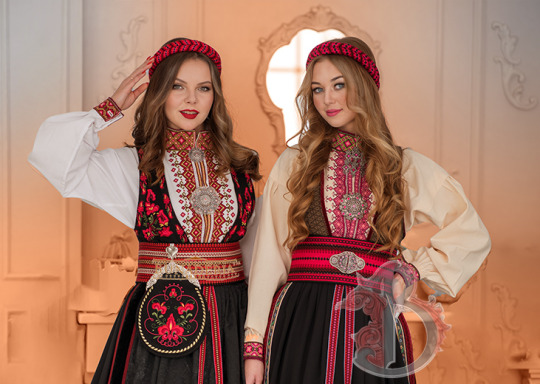


These are mostly worn for special occasions; constitution day, confirmations, anniversaries, christmas celebrations, graduation day, and of course - weddings, which is what this post will be about!
For Norwegian weddings, it's most common to see the bride wearing white and some guests wearing their bunad. There is however bunader that are designed for the bride to wear, which is the bunad I will be showing you today; brudebunad! (trans. bride bunad)
Keep in mind that bunader are very region-specific, and traditionally you wear the bunad of the place you grew up, or alternatively where one of your parents is from (there's also people who inherit their bunad from relatives; like me!). Some brudebunad consist of the regular bunad but with added jewellery and a crown; others have a specific brudebunad. Many are custom made or reconstructed from known older bunader.
Now, on to the brudebunad;
I'm starting us off with the bunad that my mom wore; Romsdalsbunad, from Møre og Romsdal. (that's her on her wedding day in the picture!)
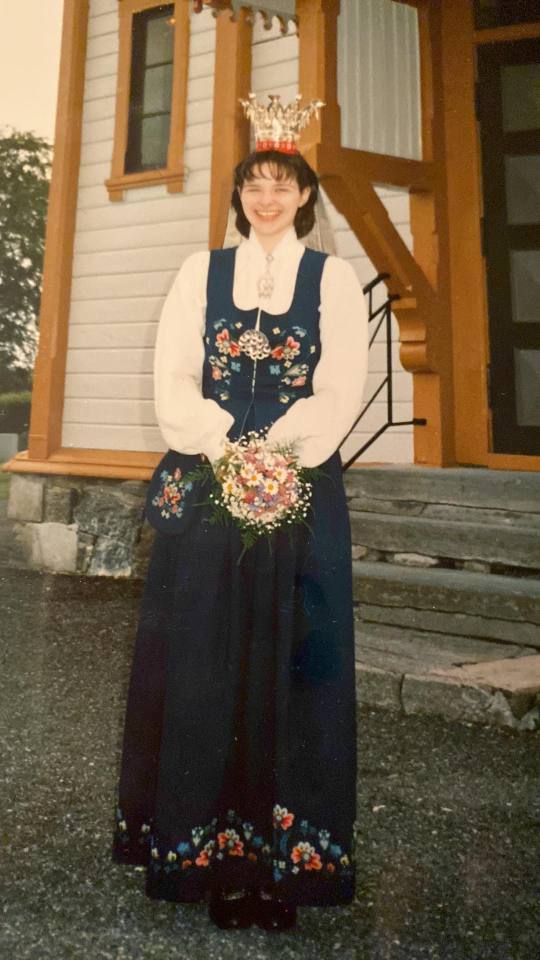
2. from Hallingdal, Buskerud

3. from Hardanger (general)

4. from Sørre Valdres
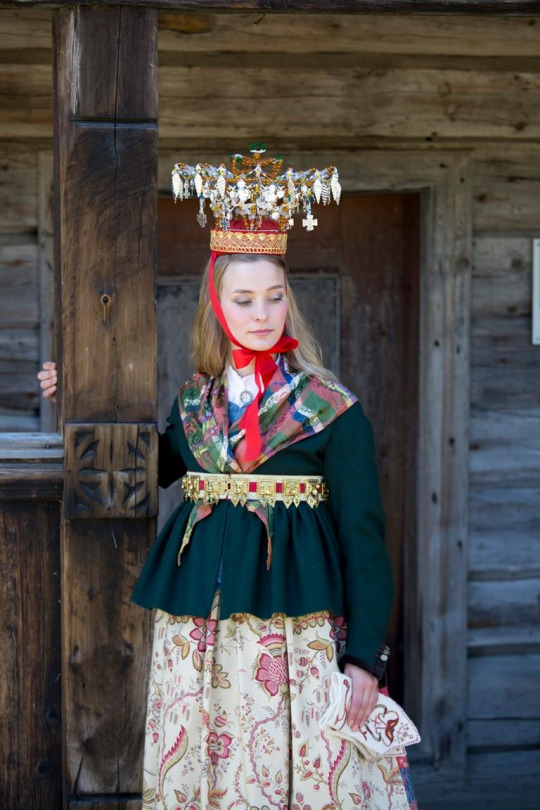
5. from Voss, Vestland

6. from Nordhordland, Vestland
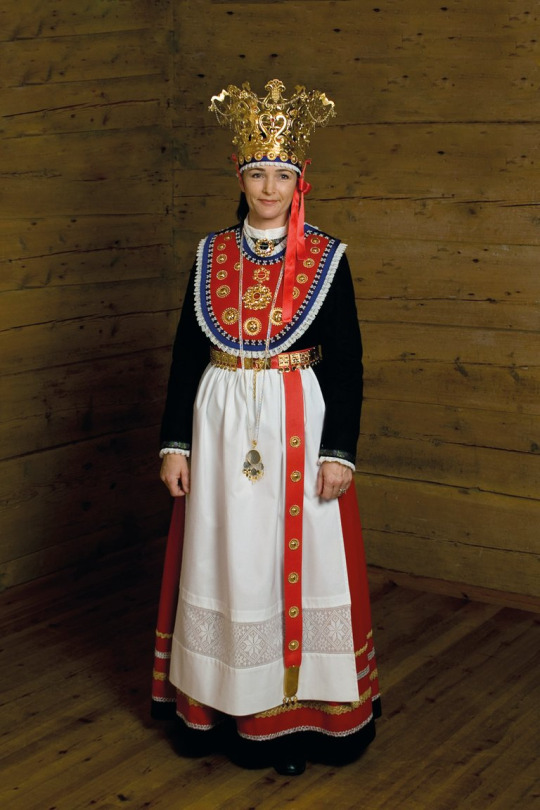
7. from Ålmli, Aust-Agder
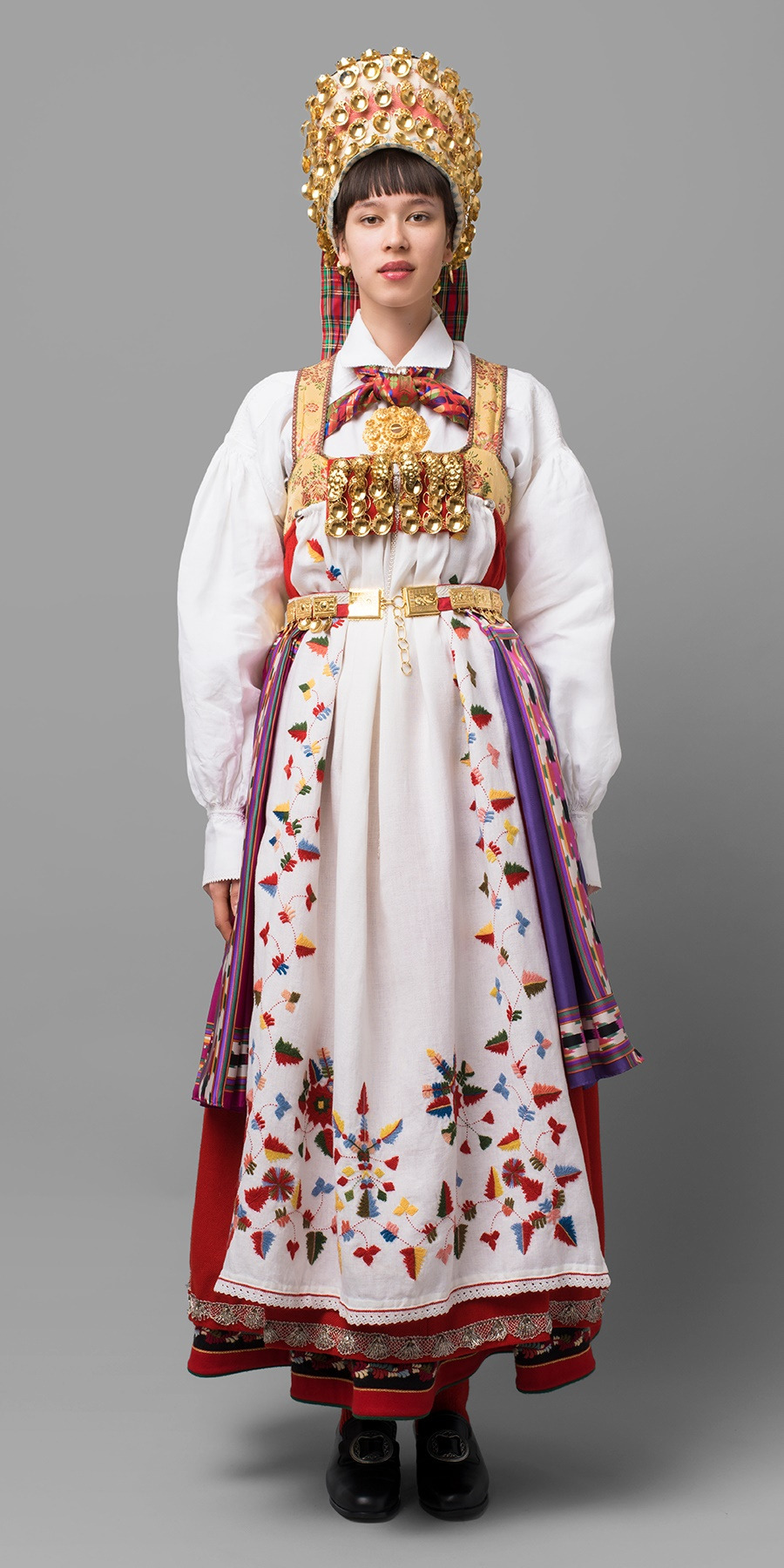
Hope this gave inspiration, whether it's for your Norwegian characters who are getting married or for a fantasy people who is inspired by Scandinavia!<3
If I got any of them very wrong, please let me know!
#traditional fashion#bunad#brudebunad#norwegian culture#folk costume#wedding#wedding attire#wedding dress#bridal fashion#crown#crowns#resource#writeblr#writerblr#writing resource#norway#fashion
48 notes
·
View notes
Text

Norwegian baby, Norway, by Staslig
#norwegian#norway#europe#western europe#folk clothing#traditional clothing#traditional fashion#cultural clothing
586 notes
·
View notes
Text
So maybe a year ish ago I found this horn at a thrift shop.
This past weekend I got the opportunity to go to paganicon for the first time. One of the main programs there was the sounds of the Iron age. This amazing person had instruments that were historically made to be similar to norwiegen and norse/Scandinavian of those times. She played them, sang songs, and told stories. Even sang a song of the sagas.
Some of those instruments were made from different goat horns and other animals. Now I believe this is a real horn except for the mouth piece. It is plastic and was made to fit on the end of the horn.
Anywho because of the event I had learned something new about my norwiegen heritage. I honestly don't know much about the different things of my heritages because I have many blood lines and there has been alot of disconnect in culture and community due to generational trauma.
However this weekend I had learned what this horn was and how it's used. It actually has many uses. A horn was sounded to give thanks to hosts of parties or events. A horn was sounded to give thanks to the guests of events. A horn was sounded to honor ancestors and spirits of the lands. A horn was a musical instrument that provided music at parties. It sometimes made the people dance! A horn was sounded to communicat the arrivals of guests. A horn was used to send prayers to the gods. A horn was sounded to call childeren back to the house.
Horns were used for so many things and it sounded like almost every villager had one for the uses they needed it for.
I am proud that I found this gem thrifting. I am so glad that I bought this now after learning about it. I now know how I can use it in my practices and connect with the gods and ancestors with it. It is a beautiful horn.
I was thinking of cleansing it, blessing it, and repainting the flowers on it and putting some runes on it to make it my own.

#pagan#norse pagan#paganpride#norse paganism#paganism#thrifting#thrift finds#norse heathen#norwegian#norwegian culture#norse pagan witch#ancestors#ancestry#ancestor veneration#culture#paganlife#pagans of tumblr#pagansim#pagan stuff#history#paganblr#Animal horn#music#musical instruments#horns
3 notes
·
View notes
Text


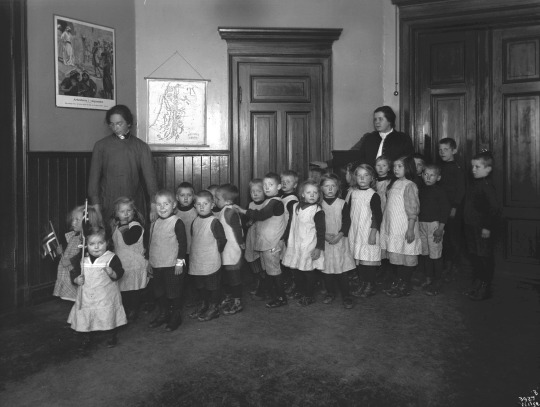

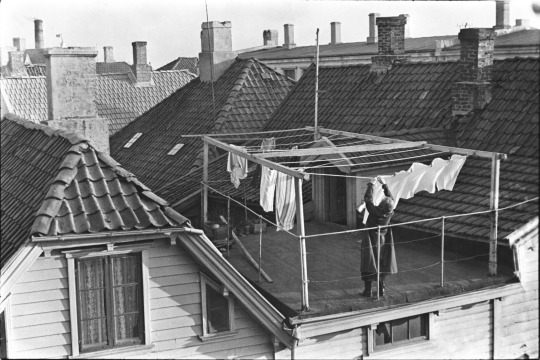
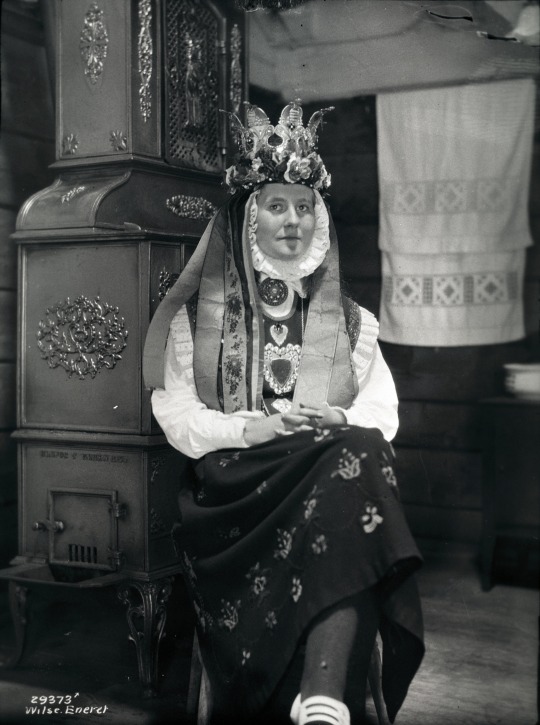



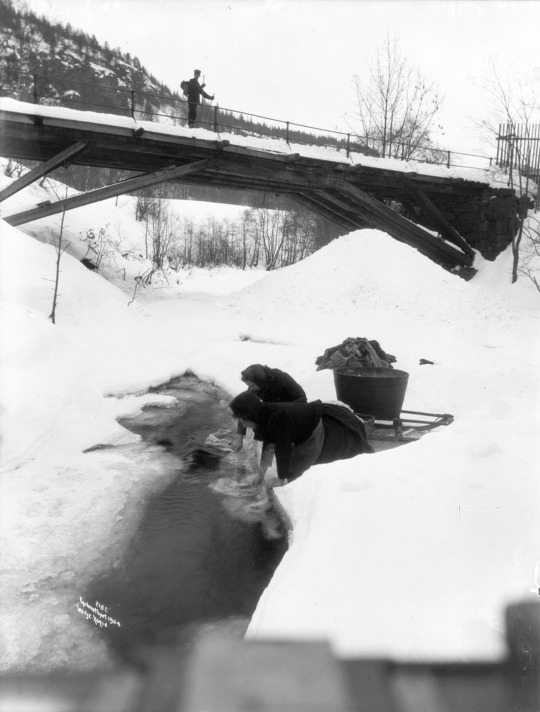
Vintage photos from Norway 1900-1940s
Photos by: Anders Beer Wilse
Wilse was a pretty active photographer who documented the life in the country and in the cities!
#norway#bunad#norge#culture#norwegianculture#culturenorway#traditional#norwegian#bunadstakk#vintagenorway#vintage photo#vintage photos#vintage#culturalwear#cultural clothing#nordic culture#tradtional wear#traditional clothes#traditional clothing#traditions
179 notes
·
View notes